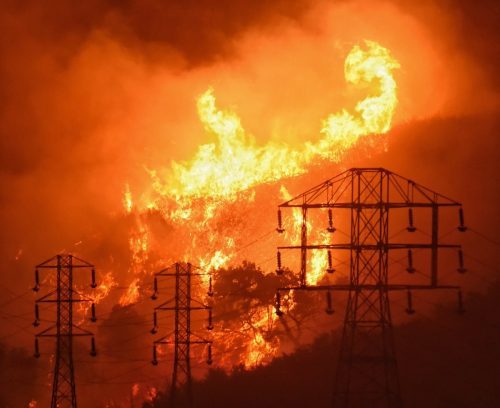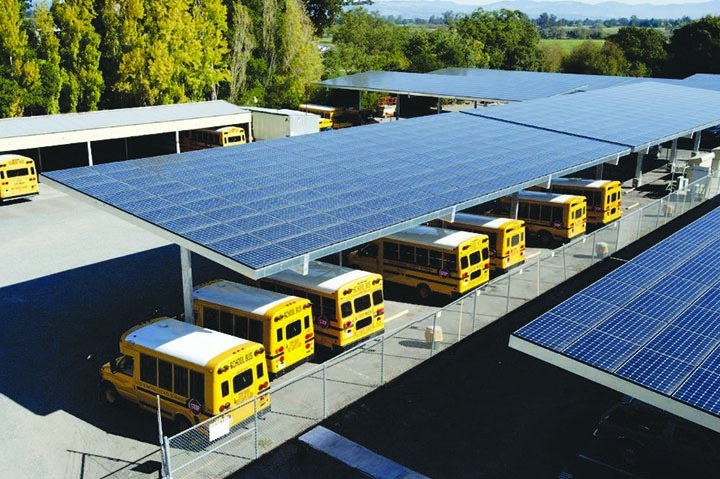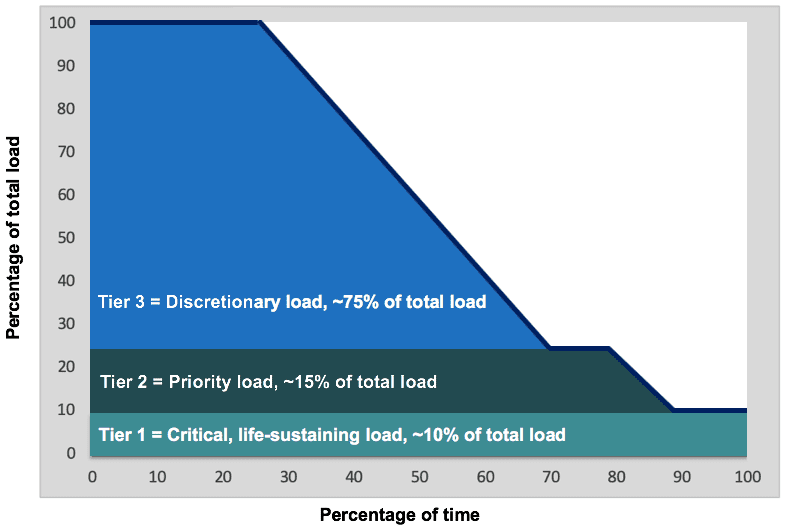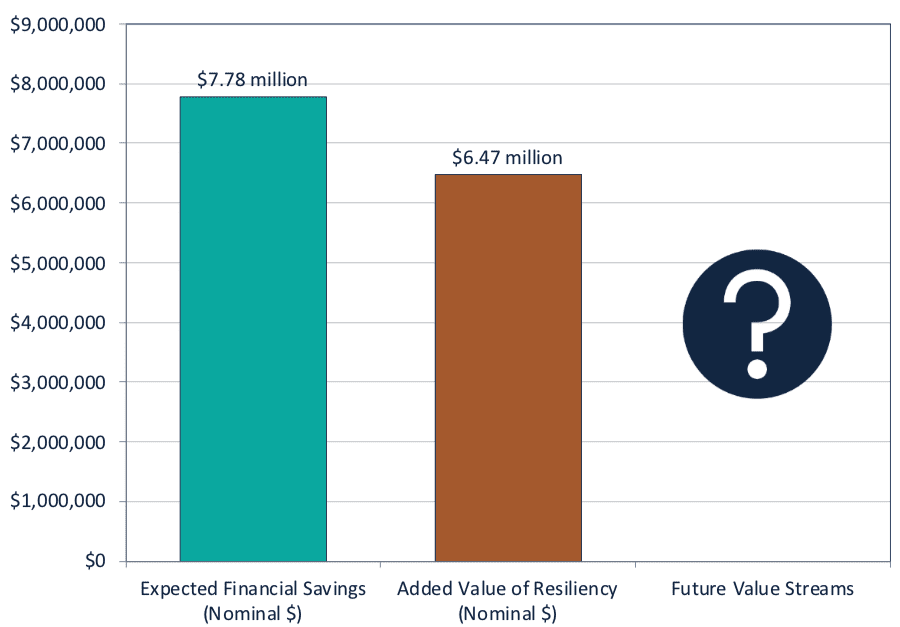
The elusive value-of-resilience has been successfully quantified
This Clean Coalition breakthrough will help unleash Solar Microgrids by accounting for their full value.
Everyone is talking about the resilience provided by indefinite renewables-driven backup power. Everyone understands that the value of this resilience is significant. However, everyone seems to be stumped when it comes to quantifying this value – as is evident at conferences, in numerous articles, and at high levels of government.
But it turns out that we can in fact quantify the value-of-resilience (VOR). In 2020, the Clean Coalition showed the way with these major breakthroughs:
- We made it simple to value resilience: Our straightforward but effective value-of-resilience methodology, VOR123, makes it possible to quantify the value of renewables-driven resilience at any facility type.
- We determined a standardized VOR for each of three load tiers: After conducting extensive analyses, we determined that applying the VOR123 methodology to solar-driven resilience for a typical facility provides overall VOR that is equivalent to a 25% adder to a facility’s electricity bill.
- We applied our VOR123 methodology to real-world projects: The methodology has worked well for numerous Solar Microgrid projects – many of which, such as the Solar Microgrids for the Santa Barbara Unified School District (SBUSD), provide critical community facilities with unparalleled levels of resilience for free.

The Clean Coalition’s VOR123 work is critical because without a standardized VOR methodology, resilience is generally valued at zero. Given that a desire for resilience is often the main driver for installing a Solar Microgrid, a standardized VOR is key to unleashing them broadly.
Making it simple to value resilience
In 2020 the Clean Coalition formalized the VOR123 methodology, simplifying and standardizing the steps.
Tiering electric loads
In developing our VOR123 methodology, we began by tiering electric loads into three tiers – critical, priority, and discretionary – regardless of facility type:
- Tier 1: Mission-critical, life-sustaining loads that warrant 100% resilience – usually about 10% of a facility’s total load.
- Tier 2: Priority loads that should be maintained as long as doing so does not threaten the ability to maintain Tier 1 loads – usually about 15% of the total load.
- Tier 3: Discretionary loads that should be maintained only when doing so does not threaten Tier 1 and Tier 2 resilience – usually about 75% of the total load.
Tiering the loads in this way makes it simple to determine the VOR for any facility type, whether it’s a hospital, a school, a fire station, a residence, or any other facility type. From a VOR perspective, the only difference between facilities is the relative Tier 1, Tier 2, and Tier 3 load allocations.
Establishing levels of resilience
Using the common tier levels of 10% of the load for Tier 1, 15% for Tier 2, and 75% for Tier 3 – and assuming enough solar at a site to net-zero the site’s annual electricity consumption – we arrived at these levels of average anticipated resilience:
- Tier 1 loads: Online 100% of the time.
- Tier 2 loads: Online at least 80% of the time.
- Tier 3 loads: Online at least 25% of the time.

Determining a standardized value for resilience
Using load tier percentages, we can determine the VOR for any facility.
Arriving at the average 25% VOR adder
The Clean Coalition arrived at these typical VOR multipliers for each of the three load tiers:
- Tier 1: 100% resilience – indefinite energy resilience for critical loads – is worth 3 times the average price paid for electricity. Given that the typical facility’s Tier 1 load is about 10% of the total load, applying the 3x VOR Tier 1 multiplier warrants a 20% adder to a facility’s electricity bill.
- Tier 2: 80% resilience – energy resilience that is provisioned at least 80% of the time for priority loads – is worth 1.5 times the average price paid for electricity. Given that the typical facility’s Tier 2 load is about 15% of the total load, applying the 1.5x VOR Tier 2 multiplier warrants a 7.5% adder to the electricity bill.
- Tier 3: Although a standard-size Solar Microgrid can provide backup power to Tier 3 loads a substantial percentage of the time, Tier 3 loads are by definition discretionary; therefore, a Tier 3 VOR multiplier is negligible and is assumed to be zero.
Combining the premiums for a standard load-tiering situation yields an effective VOR that is equivalent to a 27.5% adder to a facility’s electricity bill.
The Clean Coalition uses the conservative figure of 25% as the typical VOR123 adder that a site should be willing to pay for indefinite renewables-driven backup power to critical loads – along with renewables-driven backup for the rest of the loads for significant percentages of time. In other words, a facility should be willing to pay 25% more on their electricity bill for the significant VOR provided by a Solar Microgrid.
Validating the 25% VOR adder
To validate the 25% adder, the Clean Coalition conducted multiple analyses, including these four approaches:
- The cost-of-service (COS), which considers the cost that suppliers need to charge in order to offer the Solar Microgrid VOR across the Tier 1, 2, and 3 loads.
- The Department of Energy (DOE) Multiplier, which arrived at an average value of $117 per missed kWh over an annual period.
- A market-based approach based on the market price, where supply meets demand.
- The avoided diesel generator cost approach, which calculates the adder that would be needed for a diesel generator to fulfill a level of VOR123 resilience equivalent to that provided by a Solar Microgrid.
Read more about these approaches here.
Applying our VOR123 methodology to real-world projects
In 2020 the Clean Coalition put our VOR123 methodology to the test by applying it to a number of feasibility studies, requests for proposals (RFPs), and power purchase agreement (PPA) designs for Solar Microgrid projects.
The VOR calculations added a compelling element to our feasibility studies, showing the full economic benefits of installing Solar Microgrids. The below results show how the Santa Barbara Unified School District (SBUSD) reaps massive benefits in pure bill savings from eight solar projects and six Solar Microgrids, while reaping an almost equivalent amount of free resilience from the six Solar Microgrids alone. These impressive figures helped lead to a unanimous decision by the SBUSD Board to proceed with the projects.

A case study of the San Marcos High School in the SBUSD provides more economic details, as well as an illustration of how electric loads were tiered at that facility.
The VOR for the SBUSD Solar Microgrids was secured via a highly innovative specification in the RFP that was based on the VOR123 methodology. The Clean Coalition’s experience with Solar Microgrids has identified a huge need for standardized Performance Guarantees in integrated Solar Microgrid PPA contracts. The PPA provider needs to be ready to effectively deliver VOR123 resilience and bill savings – or be ready to pay penalties.
Learn more
The Valuing resilience of Solar Microgrids webinar was presented on 5 November 2020 and provides the most up-to-date and comprehensive presentation of our VOR123 methodology.

